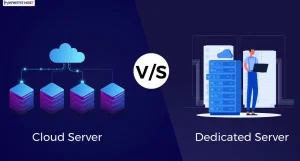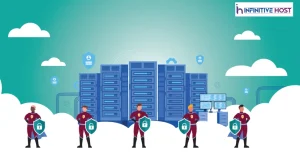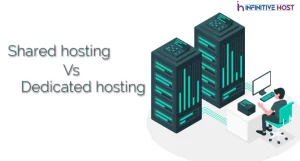Looking for a solution that is extremely scalable, adaptable, and quick for your IT backbone?
Knowing the distinction between bare metal and virtualized settings will enable you to make an educated choice.
Spend some time here to grasp the fundamentals:
What are your project’s needs for performance, density, and compliance? These words will influence your deployment approach and your capacity to operate virtualized environments.
What exactly is Bare Metal ?
Bare metal is an alternative term for “Dedicated Server Hosting.”
This is a single-tenant environment that provides direct access to the underlying hardware technology without the need for a hypervisor. As a result, bare metal may handle many operating systems in addition to its fundamental functionality.
The term bare metal refers to direct hardware access. It contains the ability to utilise all of its unique capabilities, which are inaccessible with hypervisors of types 1 and 2. Virtualization would only be used to simulate the environment in question.
What is the function of a Bare Metal Hypervisor ?
A Type 1 hypervisor or bare-metal hypervisor is virtualization software put directly on hardware. The hypervisor is the host or operating system at its heart.
It is designed to permit the virtualization of underlying hardware components to work as if they had direct access to the hardware. The hypervisor allows a computer’s operating system to be separated from its physical structure and hardware. From this vantage point, the hypervisor may provide a physical host with the capacity to manage several virtual units.
It enables the hosting of several clients on the same server. Server virtualization enables a considerably denser deployment at the overhead expense and cannot fully use hardware characteristics.
Each client will simulate their dedicated server. However, the server’s physical resources, like CPU cycles, memory, and network bandwidth, are shared across all server tenants.
The hypervisor prioritizes adaptability and scalability. In instances when not all physical resources are being utilized, hypervisors enable a far more dense hardware usage. Virtualization may, but is not reliant on, an underlying operating system. Especially when discussing production workloads relating to the data center. In data centers, hypervisors are put on top of bare metal servers, not within the operating system.
Additionally, the performance of a hypervisor is determined by the sort of image that a virtual environment generates.
Microsoft, Citrix, and VMware are the most widely used hypervisor systems. The Hyper-V, Systems XenServer, and ESX brands constitute the vast bulk of the current hypervisor industry.
Read More :How To Protect Dedicated Server From A Cyber Attack?
Benefits Of Bare Metal Hypervisors
You may not require the superior performance of a bare metal server with a single tenant. However, by utilising a hypervisor, your organisation may be able to utilise its resources better. Even when compared to the extremely efficient and scalable bare-metal option, hypervisors provide several advantages.
Improved hardware utilisation
Choose a hypervisor if your workload is dynamic and you do not require absolute cutting-edge performance. Workloads that must be spun up and operated for a brief length of time before being shut down are ideal for this setting.
A bare-metal server can only host a single application and operating system. To host numerous VM instances, a hypervisor utilises a much more significant amount of network resources. Furthermore, based on these instances can execute a fully separate application and operating system on the same physical machine.
Adequate protection
Even though instances formed by a hypervisor are not physically separated, they are logically isolated from one another. Even though they share the same physical server, they lack an essential understanding of one another. If one is attacked or experiences a mistake, the issue does not immediately spread to another. Hypervisors are extremely safe despite the possibility of the noisy neighbor effect despite not being physically devoted to a single client.
Enhanced portability
As an autonomous entity distinct from the underlying hardware, the structure of the VM makes it highly mobile. A virtual machine can be transferred between any distant or local virtual server with sufficient capacity. This may be accomplished at any moment with minimal disturbance. This occurs so frequently that there is a term for it: live migration. Consequently, a virtual machine may be relocated to the same hypervisor environment on a different underlying infrastructure so long as it is capable of running the hypervisor. Containerisation enables the highest degree of mobility.
Backup and security
Virtual machines are far simpler to protect than conventional programs. An application must be suspended before it can be backed up. This procedure is quite time-consuming and may result in a significant app outage. The memory space of a virtual machine may be recorded fast and efficiently using a snapshot tool. This snapshot can then be stored on a disk within seconds. Every picture may be recalled, allowing for the recovery and restoration of lost or corrupted data on demand.
Read More : How Renting Of A Dedicated Server Works In India?
Final Takeaway
Every circumstance is unique and requires consideration of all available options. For example, there is no definitive solution between a bare metal server with native workloads and a bare metal server with a hypervisor and virtualized workloads. Both alternatives have pros and cons, so it comes down to ensuring that all company needs are addressed.
After evaluation, judgements will be made based on what your team is most comfortable with and what meets your needs best. It is recommended to test both systems to assess performance as well as the influence on infrastructure and service management.
With adequate knowledge about security, scalability, and adaptability, you should have sufficient information to limit your options. With little advice and testing, a bare-metal type 1 hypervisor may be the answer your company has been seeking.









